As a continuation in our ongoing "20 Questions" series, we sat down with guide Chris Goldmark who splits time in Puerto Rico and New Jersey guiding for bluefish, stripers, bonefish, tarpon and jack crevalle just to name a few. To learn more about Chris before reading his innermost thoughts, check out his guide profile. Also check the links below the interview for our brief writeup on bonefishing in Culebra.

Hatch Magazine: Every fly fisherman thinks the big three (bonefish, tarpon, permit) when the Caribbean is mentioned. What's the next-best (or better) species to target on the fly in Culebra?
Chris Goldmark: Big Jacks, crevalles and especially Horse eye.
HM: You're quoted in an earlier article in Hatch Magazine as saying that "Culebra should never be considered a major Bonefish destination by any stretch of the imagination," yet you've decided to make it not only your home for six months of the year, but the location for your bonefishing guide business. What gives? Why anchor your business and invite other anglers to visit a destination that is so un-major? Surely it's not just the food at Mamasita's, right?
CG: I wouldn't consider Culebra a major bonefishing destination only because it has limited areas to fish and can't support a large army of anglers at one time. What it does have is super quality fishing for really big bonefish on some beautiful albeit small but highly productive flats that can support 3 more 4 fly fishers a day at most. It also seasonally has some pretty spectacular tarpon fishing. Back in 1990, I didn't pick Culebra to set up my flats business, it more or less picked me. I moved to Culebra not to fish but to work with my wife in the restaurant business. I was fly fishing on my own in my spare time and realized the potential that Culebra had for producing big bonefish. On the advice of my good friend, and the Godfather of tarpon fishing in Puerto Rico, Capt Mike Vergis, I started taking people to the flats professionally. I was guiding part time and doing everything in the world from cooking to bartending, commercial fishing and construction, just to make ends meet. It wasn't until about 10 years ago when the business became successful enough that Culebra Fly Fishing could support itself on its own. I never had the luxury of just being able to look at the globe and being able to pick a spot to fish or start a guiding business. We ended up in Culebra to work. I had a family to support with both my wife and I working two jobs in the lean years just to make it. Like I said, Culebra picked us, like a marriage of convenience, with the love coming later and everything else just falling into place.
HM: You’ve mentioned to us in past conversations that the fisheries in Culebra are under attack from gill-netters and people who are not necessarily concerned with maintaining the environment. Can you expand on what the situation is on Culebra and what people need to know about the status of the fishery?
CG: As the result of some hard work and perseverance on the part of the Puerto Rican fly fishing community Puerto Rico has finally passed legislation protecting permit, bonefish and tarpon. There is still the occasional poaching incident but all in all we feel stocks now have the protection they needed for so long. There is a healthy bonefish population in Culebra and Vieques but a large dip in the permit numbers in the last few years. Tarpon numbers are very healthy on the other hand. Permit are good to eat, tarpon are not!
HM: You live part of the year in Cape May, NJ. What brings you there every year and tell us a bit about what species you target when guiding there?
CG: Cape May is where I spent most of my life and where striped bass is king. Most of the fishing we do here is back bay and top water. We also target bluefish and weakfish, but striped bass make up the bulk of our fishery
HM: What's the first fish you can remember catching? Tell us about it.
CG: Snapper bluefish. We started fishing for them from the time we could stand up off the docks in Cape May
HM: What's your favorite piece of gear at the moment?
CG: My Gatti 7wt put together from a blank by master rod builder extraordinaire George Costa.
HM: Wow. Thanks for the utterly shameless plug. Now we'll avoid the urge to link to said custom rod builder's web site. Moving on ... what's your favorite to species of fish to target? What makes it so special?
CG: I have two, big bonefish and big dorado. No two fish I have ever encountered will make line disappear off a deck faster!
HM: If you could fish anywhere in the world, where would it be? Why?
CG: Hatteras in May for big dorado and Grand Bahama in June for big bones and of course Culebra, Puerto Rico for big bones in March.
HM: Everyone has the "one that got away". Some of us have many. Tell us about yours. This might be your fish, or one of your clients.
CG: I'm conditioned to mentally erase all the fish my clients blow off so that I don't lose my mind. I am also conditioned to remember and relive constantly all the battles with memorable fish I fucked up so I can direct my anger at myself instead of others. Make sense? So ... 32-inch bonefish when the flouro to mono pigtailed... my knot. March 2009.
HM: What about the ones that didn't get away? What's the best fish you've ever brought to hand? Again, either yours or your clients', it's the fish we care about.
CG: 8.2lb Flounder, 12lb tippet, current world record for largest flounder ever caught on a fly rod, back in 2008 in Cape May. Pure luck by me, as most world records are, I suspect.
HM: What led you to your current, rarified profession and how long have you been at it?
CG: I started guiding for bonefish in Culebra in 1991 and backwater charters in Cape May since 1997. I was working for my wife in Culebra in the restaurant business and customers kept asking me to take them bone fishing. My wife used to yell at me and the fly fishers didn't so it was a no brainer!
HM: What would you say to other fly fisherman out there that aspire to be a guide?
CG: It is the greatest job in the world! Just make sure when you are starting off that you have another source of income. It takes many years to build a client base and be able to guide 6 days a week or more, which is what I do during season now. You'll need more money to live on than guiding will initially provide ... so talk your wife into taking that second job!
HM: False modesty must be checked at the door. What's the key to being a great fishing guide? If it helps to say that the question is "what do you think the key is", then that's the question.
CG: The key to being a great guide is being able to catch a fish using the client as the tool and having him or her never know that it wasn’t there own skills that made it happen. Smoke and mirrors! The problem a guide has over the average angler is that every day we fish, the clock is ticking, loudly, and you have to minimize and overlook a lot of angler error and bite your tongue constantly. Otherwise you will end up like one of those screaming gonzos that guide in Florida. Actually, there are a few guides in Florida that don’t yell at their clients, or so I’ve heard …
HM: What are the best and worst parts of the job?
CG: The best is having somebody tell you how much he or she enjoyed catching their first bonefish or striper on a fly. The worst is not being able to give an angler that opportunity. Corny, but true.
HM: What's the worst/craziest thing that's ever happened to you during a day of fishing or guiding?
CG: Finding dead bodies. Twice now.
HM: What makes an ideal client?
CG: Some body that is open minded to advice and has a positive attitude about our day together and doesn’t look at the clock.
HM: Some guides say they haven't had one even though it’s hard to believe. Whether you have or you haven't, what makes a terrible client?
CG: An asshole is an asshole … it doesn’t matter where you are or what you are doing. Unfortunately they exist, even in our business.
HM: It goes without saying that you've probably seen your first-timers and novice clients pull some unbelievable shit. We've all been there. But what about the decent fisherman you guide? What is the most common mistake you see otherwise skilled fly fishermen make?
CG: In bonefishing the most common mistake even experienced anglers make is not letting the fish find the fly. Stripping too fast and letting your adrenaline take control almost always results in a spook or refusal. In striper fishing, the biggest mistake experienced fly fishers make is not being open minded about changing patterns and presentation style as conditions change or vary.
HM: What about you? Everyone has a weak spot in there fishing skill set. What's yours?
CG: Overpowering my cast in excitable moments and my inability to wean myself from flouro.
HM: What's the biggest negative change you've noticed in fly-fishing in the last 10 years?
CG: Lack of recruitment. As my older clients are starting to die off I’m not getting any younger ones taking their place.
HM: What's the biggest positive change you've noticed in fly-fishing in the last 10 years?
CG: The constructive exchange of ideas and info over the Internet, with a caveat. There is an incredible amount of bullshit on some sites and you have to shop, but the info highway is where it’s at in fly-fishing these days with out a doubt.
HM: We're assuming that you have something else in your life besides fishing. What's your M.O. when you're not on the water?
CG: I manage two marinas during the summer in Cape May besides running trips when ever I can and guide full time during the winter seven days a week in Puerto Rico. My MO at my age is getting to the couch as often as possible with a box of wine, a remote, and having the roosters’ crow me to sleep.




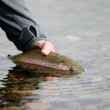
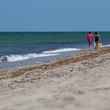
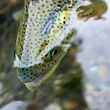
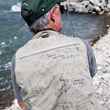



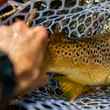
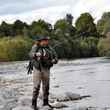



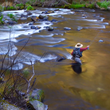
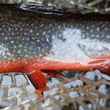



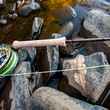
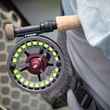



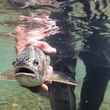
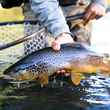


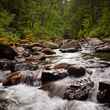
Comments
Tarponhombre replied on Permalink
Congratulations! my friend a great interview and you fish in one of the best spot for bonefish in the world.
Capt.Pochy
Pages